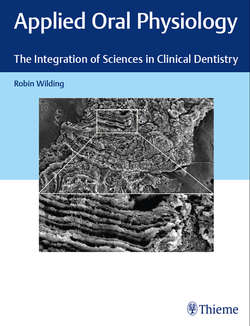Читать книгу Applied Oral Physiology - Robin Wilding - Страница 58
На сайте Литреса книга снята с продажи.
3.7.2 Influence of Female Hormones
ОглавлениеAt puberty, the ovaries begin a cyclic production of estrogen and progesterone in response to secretion of gonadotrophic hormones from the pituitary gland. The main functions of these hormones are the control of the menstrual cycle. However, they also affect many other parts of the body including the oral cavity. The early teens are associated with an increase in gingival bleeding. It can be demonstrated that this is the result of an increase in a number of bacteria known to cause gingivitis. These include gram-negative anaerobes such as members of the consortium already described and include Prevotella intermedia. The increase in these bacteria may be due to their ability to use estrogen and progesterone as substitutes for vitamin K, an essential growth factor.
During pregnancy, there is a sustained increase in both estrogen and progesterone levels, above even the cyclic peaks which occur just before the end of each menstrual cycle. The changes in the oral cavity during pregnancy are therefore more pronounced and common. In addition to the effect on bacteria already mentioned, there are vascular, cellular, and immune changes which are collectively responsible for the condition known as pregnancy gingivitis. The immune changes include a reduction in the migration of inflammatory cells. There is also an increase in a subset of CD4, cells which kill B lymphocytes, the cells responsible for producing antibodies to some of the very bacteria which are thriving in the high levels of the estrogen and progesterone. Progesterone causes increased vascular permeability and release of prostaglandins, both factors which support inflammation. Progesterone also reduces the production of collagenases, so the balance of collagen turnover between secretion and resorption is upset, allowing the collagen content of the gingival lamina propria to increase. These influences may lead to the development of a mass of healing (granulation) tissue in the gingiva. This mass is called a pregnancy epulis. It is quite harmless and regresses as does the gingivitis, after the birth of the child.
The onset of menopause is due to age changes in the ovaries, which fail to respond to pituitary hormones. The decrease in estrogen and progesterone contributes, along with other factors, to cause osteoporosis, a decrease in bone mass. There is no evidence that osteoporosis is linked with severe periodontal disease which also involves loss of bone around the teeth. Menopause is, however, associated with a decrease in mucosal secretions, including saliva. Dry mucosa is easily damaged and affects the comfort and retention of dentures.
Key Notes
The junctional epithelium must perform the functions of a barrier to infection and call up resources, if the barrier deteriorates into a battleground. In this thin layer of epithelium, all the defense mechanisms of the immune system may be recruited, including the special defenses of antibodies, neutrophils, macrophages, and complement. The conditions which initiate this deterioration, from what is normally a commensal relationship, into a full-scale defense against pathogens, are vital to uncover.
